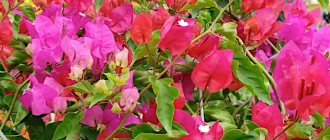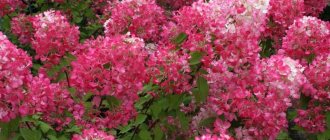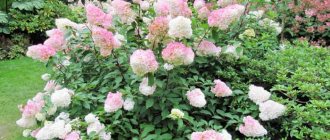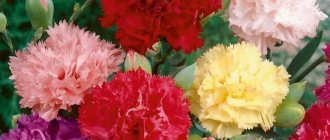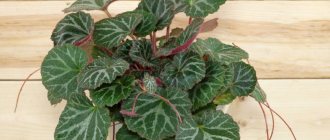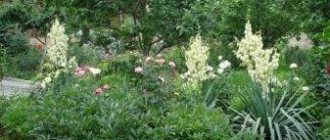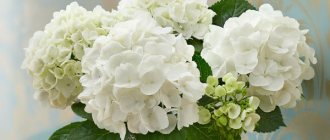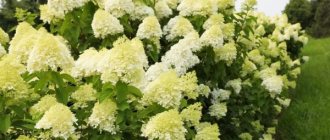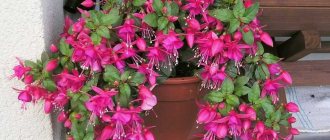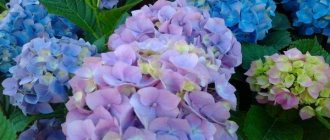Description of celosia comb
Comb celosia (Celosia cristata) is a plant of the Amaranthaceae family, reaching an average height of 70 cm. It has thick and branched erect stems of reddish or green color. The leaves of the crop are entire, with pointed ends, oval or elongated, arranged on the shoots in an alternate order. Depending on the variety, the plates are not only green, but also purple or golden.
During the decorative period, comb celosia bears dense inflorescences consisting of small buds. The width of the panicles can reach 8 cm. The edges of the inflorescences are strongly curved in waves and resemble cockscombs, which explains the name of the variety. The color of the panicles can be scarlet, red, orange, yellow or lilac.
Flowering period of celosia comb
In landscape design, comb celosia is valued for its long flowering. Most varieties bloom in mid-June and remain decorative until early November.
Celosia comb - perennial or annual
Comb celosia belongs to the category of perennial plants. However, it does not tolerate even slight frosts in open ground. Therefore, on the territory of Russia, the crop is usually bred as an annual plant and is re-sown with seeds every season.
Cockscomb flowers - types and varieties
Cockscombs are beautiful, vibrant flowers. Despite the consonance of the names, these are not cockerel flowers, which are otherwise called irises. They are completely different and belong to different families. Cockerel flowers belong to the Iris or Iris family, and celosia comb belongs to the Amaranth family. Based on the shape of the inflorescences, cockscombs are divided into several groups. These are comb, pinnate, spikelet. The most common species are considered to be comb and pinnate celosia. The silvery variety of comb celosia is often cultivated as an annual. Although by nature it is a perennial plant. The height of the bush reaches 50-100 cm. There are oval or elongated leaves along the entire length of the stem. Flowering begins in mid-summer. The comb variety of this plant has straight, powerful, succulent stems that rarely reach a height of more than half a meter. The leaves are light, the inflorescences are round or umbrella-shaped. They are made up of small fluffy buds. Arranged in sinuous lines with fringe at the ends. The buds are bright red, burgundy or fiery. Flowering begins in July and with good care continues until mid-autumn. One of the brightest representatives of this group is Atropurpurea. The height of the variety is about 20 cm, the stem has a burgundy tint, the foliage is light, and the inflorescences are lush and purple. Another bright representative is Impress. A characteristic feature is that not only the buds, but also the stem and leaves are distinguished by a red hue. Paniculate species come in different heights: from 25 cm to 1 m. The shoots are straight and have gray-green leaves. Towards mid-summer, tall panicle-like buds appear. They come in pink, red, yellow or fiery. One of the most prominent representatives is Golden Flitz. The plant reaches 70-80 cm and has bright orange inflorescences. Goldfeder is a low-growing variety with golden buds. New Look is distinguished by the original purple color of the foliage and stem. At the same time, the inflorescences of the bush are honey-colored. Spikelet types of cockscombs grow a little more than a meter and look more delicate. Their buds look like spikelets. The most common shades are yellow and orange. Flowering begins from the lower part of the inflorescence, which becomes lighter.
Varieties of celosia comb
Photos of comb celosia in a flowerbed demonstrate the diversity of annual varieties. You can name several of the most popular types.
Impress
The dwarf variety grows to only 25 cm above the ground. The leaves of the plant are dark, with red veins, and the inflorescences are wine-red or deep burgundy.
Celosia Impress blooms in mid-June
Empress
The popular variety produces deep purple inflorescences with a crimson tint. The decorative effect is enhanced by beautiful purple-green leaves. The variety is unpretentious and tolerates mild drought and lack of sun.
Celosia Empress grows to an average of 30 cm
Atropurpurea
A miniature variety with light green leaves and a dark stem blooms with burgundy-crimson inflorescences. The panicles are quite large and look bright in the garden, despite the compact size of the annual.
Attention! Celosia Atropurpurea can be grown not only in open soil, but also in pots.
The height of celosia Atropurpurea does not exceed 20 cm
Coral Garden
The medium-sized variety reaches about 50 cm above the ground. Bears relatively small but spectacular panicles of pink-crimson or red-orange hue.
The Coral Garden variety develops well on light soils and is suitable for alpine hills
Reproduction methods
There are two ways to propagate comb celosia on a site. The most common practice is to grow crops from seeds - this method is easy and effective. Planting material is sown in early spring, and closer to summer the seedlings are transferred to open ground.
If desired, cuttings can also be used. In the spring, several shoots of the annual are cut off and placed in a solution of a growth stimulator, and when roots appear, they are transferred to the substrate. After another two weeks, the cuttings can be transplanted to a permanent place in the garden.
The vegetative method for annual celosia is used quite rarely. It is a little more complicated than seed propagation. In addition, plants from cuttings are not highly decorative and do not bloom as profusely.
Seedling care
Growing celosia seedlings involves timely watering, fertilizing and providing the plants with good lighting:
- Water the plants so that water does not stagnate in the soil. It is better to dry the soil in the container a little rather than overfill it.
- Celosia seedlings are fed with complex mineral fertilizers for garden flowers. Top dressing is applied two weeks after picking and then at intervals of 10-14 days.
- Until April, the daylight hours are short, so the plants receive additional light in the morning and evening for two hours.
How to grow celosia comb from seeds
Growing comb celosia at home from seeds is not associated with great difficulties. To get strong seedlings, it is enough to follow the basic rules.
When to sow celosia comb for seedlings
Sowing comb celosia for seedlings is usually done in early or mid-March. Such terms are optimal for the middle zone. By the time the final warming occurs, seedlings from seeds have just enough time to become strong enough to be transferred to the ground.
In Siberia and the Urals, annuals can be planted until the beginning of April. Spring comes late in the region, so seedlings are usually brought to the site in early summer. But in the south it is allowed to sow seeds early in mid-February.
Growing conditions
You can plant comb celosia seedlings either in a common wide and shallow box or directly in individual cups. The latter option is considered preferable, since the crop does not tolerate picking well. In both cases, the height of the containers should not exceed 10 cm.
Comb celosia soil requires loose and light, moderately nutritious. It can be prepared from garden soil, humus and sand, taken in equal volumes. Before sowing seeds, both the container and the substrate must be treated with boiling water or potassium permanganate to remove possible bacteria.
How to sow celosia comb for seedlings
To plant celosia comb seeds for seedlings, you must first prepare the seed. For 3-4 hours, annual grains are soaked in a solution of a growth stimulant to speed up the emergence of seedlings.
The further landing algorithm looks like this:
- A layer of drainage is placed in a common container or cups, and the substrate is poured on top.
- Moisten the soil generously with a spray bottle.
- Spread the seeds over the surface of the substrate, pressing lightly with your fingers.
- Lightly spray the soil again and cover the containers with film.
The seeds should be distributed as evenly as possible, leaving 2-3 cm of space between them. There is no need to sprinkle soil on top of the grains.
Attention! Seeds of comb celosia, if all rules are followed, germinate on average in 5-7 days.
At first, comb celosia from seeds should be germinated at a temperature of about 25 ° C
Aftercare
Planting comb celosia flowers and caring for the seedlings is quite simple. In the first week, containers with seeds are kept warm in diffused light and ventilated daily. When green sprouts appear, you will need to remove the film and move the box or cups to a sunny windowsill. At the same time, seedlings need to be shaded from direct rays to avoid burns.
Care when growing annuals comes down mainly to watering. The soil should not be over-moistened, but it should not dry out completely either. Watering is carried out using a sprayer so as not to erode the soil.
When growing seedlings in a common box, after 2-3 leaves appear on the seedlings, you need to pick. If the seeds were initially sown in individual cups, this stage is skipped and only thinning is carried out - the weakest seedlings are removed.
Comb celosia is planted in open ground in May or early June, depending on the weather. Since the crop does not tolerate even light frosts, it is necessary to wait until the final warmth is established. The site for the annual plant is chosen to be bright and protected from drafts. The soil should be nutritious, but loose and with a low level of acidity. Before planting crops, the soil is dug up and enriched with sand and humus.
The transfer of seedlings into the soil is carried out very carefully, without damaging the roots of the plants. It is advisable to preserve the old earthen lump, in which case the celosia will take root faster.
Subsequent care when growing annuals comes down to several activities:
- Watering. The culture belongs to the category of drought-resistant and is afraid of waterlogging. Watering is carried out only during a long absence of precipitation, when the soil in the flowerbed becomes completely dry.
- Feeding. It is recommended to fertilize the annual plant twice a month with liquid products for garden and indoor flowering crops. The composition should contain mainly phosphorus and potassium.
From time to time it is recommended to weed the soil and loosen it. In this case, the roots of the annual will be able to receive more oxygen, moisture and nutrients.
Attention! When growing comb celosia from seeds, you should not overfeed the crop with nitrogen or fresh organic matter.
Planting and care in open ground
Celosia has a number of requirements for the planting site and subsequent care. However, if you follow all the recommendations, the exotic flower will not take long to bloom.
When to plant
The timing of planting in the ground occurs at a time when the threat of return frosts has completely passed.
Important! Even in regions with mild springs, it is recommended to harden off seedlings before planting them in the ground.
Plants begin to harden off 2 weeks before the planned transplant. The trays with sprouts are taken out into the open air every day, increasing the time the plants stay outside by 5–10 minutes every day.
How to plant
The planting pattern in a flower bed depends entirely on the size of the plants being planted. Thus, tall varieties of celosia need to be planted in increments of at least 25 cm, and dwarf varieties can be planted at a distance of 15 cm from each other. The landing technology is as follows:
- A few days before planting the seedlings, planting holes are laid on the site.
- The volume of the holes should allow you to completely fit the earthen lump of the sprout.
- A drainage layer is placed at the bottom of the hole, since stagnation of moisture is detrimental to the delicate roots of celosia.
- It is very good if the seedlings are grown in peat pots: this will help the sprouts quickly adapt to a new place and avoid damage to the root system. If the seedlings are in ordinary pots, then planting is carried out by transshipment.
- The free space in the planting hole must be filled with substrate and compacted slightly.
The soil
Celosia grows best in slightly alkaline soils with low acidity. The soil should be loose and permeable, without stagnant moisture.
Lighting
Celosia requires a lot of sunlight. Based on this, you need to select a site that is well lit, without shadows, but at the same time has protection from sharp gusts of wind and drafts.
Watering
Watering should be done moderately and only after the top layer of soil has dried.
Attention! Celosia does not tolerate stagnant moisture, this can cause the development of gray rot.
Top dressing
Fertilizing is an important component of abundant flowering. Avoid organic fertilizers and mineral complexes with a high nitrogen content.
The standard feeding schedule is once every 30 days..
Trimming
Celosia does not require crown formation. Pruning as such is not carried out, but inflorescences are often cut to form decorative compositions of dried flowers or to collect seeds.
Growing in a pot
Indoor celosia is an excellent alternative to garden growing. At home, celosia can be grown as a perennial, following basic care recommendations.
Diseases and pests
Comb celosia in open ground and when grown at home can suffer from some ailments and insects. The main dangers for annual plants are:
- black leg - the disease usually develops in young seedlings when the substrate is waterlogged; the root system and shoots at the base begin to rot;
Celosia affected by blackleg must be urgently dug up and destroyed - aphid - an insect that infects crops in large colonies at the beginning of summer, sucks plant juice from leaves and stems;
Aphids on the site often coexist with ants, so pest control must be comprehensive - nematode - a soil parasite that harms roots in open ground, disrupts nutritional processes and causes the death of celosia.
It is impossible to cure comb celosia from nematodes in the later stages; the flowers can only be eliminated
To prevent fungal diseases, it is necessary to monitor, first of all, the degree of soil moisture. Diseases develop most actively in swampy and acidified soil. Too close planting of annuals also contributes to the appearance of fungi. Therefore, when transferring seedlings from seeds to soil, small intervals must be observed.
Spraying with copper sulfate or Bordeaux mixture helps well against crop diseases in the early stages. A soap solution usually allows you to cope with leaf pests; in advanced cases, industrial insecticides are used.
Celosia comb in landscape design
Decorative annual plant is widely used in garden design. Typically, comb celosia is planted:
- in solo and multi-component flower beds;
Even miniature varieties of celosia attract attention during the flowering period - in curbs;
A low annual helps to clearly highlight the lines of paths and flower beds - along walls and fences.
Comb celosia decorates empty spaces and enlivens the landscape
The ornamental plant goes well with other crops in the garden. Grasses and conifers, labelia and marigolds successfully coexist with the annual plant.
